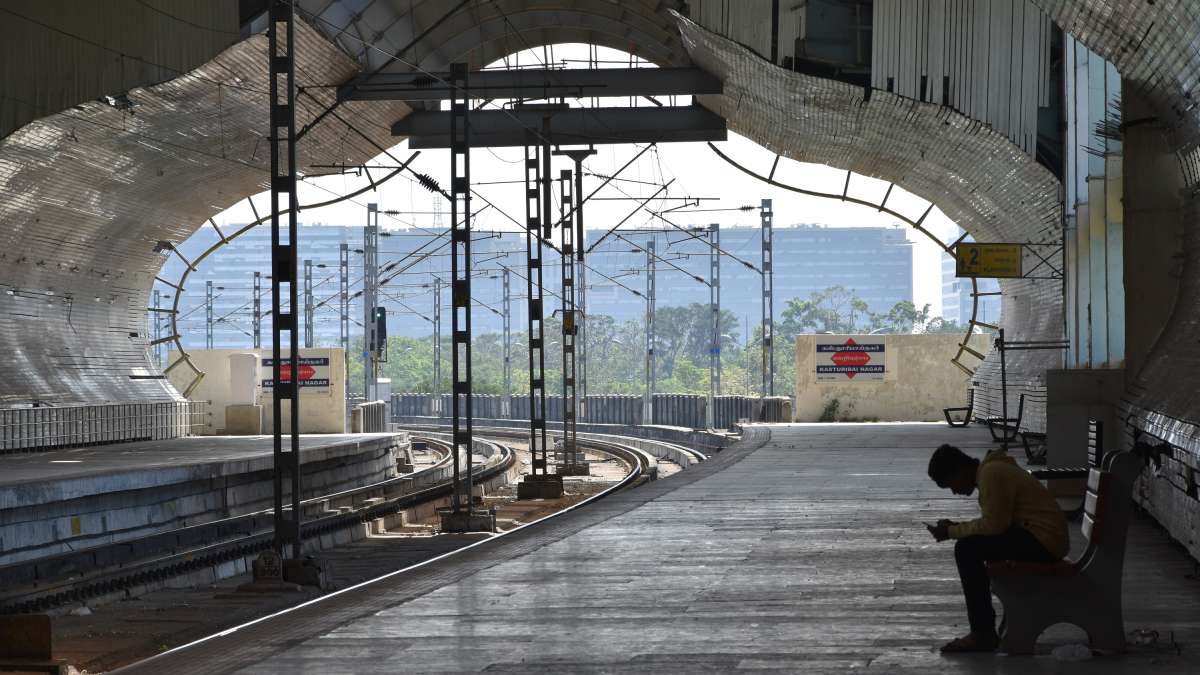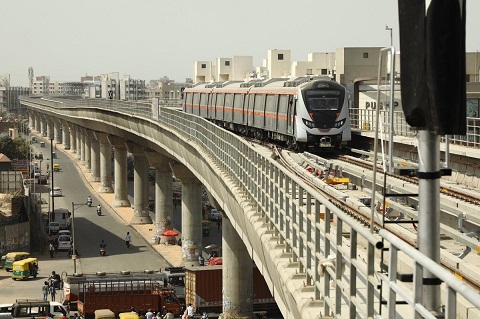
Cerema's mission focused on the "acoustic" and "vibration” aspects of the project and was the subject of a report in French and English. Cerema has taken note of international regulations applicable to the project, analysed the project, analysed the preliminary environmental environmental studies, identified the differences with the French regulatory and methodological and framework and drafted the specifications of the services to be provided for the detailed studies to come.
A comparison of Indian and French regulations

In order to meet the growing need for mobility in the city of Surat (4.6 million inhabitants), the transport authority, Gujarat Metro Rail Corporation Ltd, plans to build two metro railways. This project is about 40 km long and is 80% developed. 40 km and 80% of it will be overhead (often in viaducts) and 20% underground under the old urban centre.
Its total cost is estimated at $1.7 billion and is co-financed by the French Development Agency to the tune of $ 250 million. The latter has requested Cerema to ensure the quality of the environmental integration of the project on two very important issues in urban environment: acoustics and vibrations.
Cerema's work initially consisted of analysing the various preliminary study files carried out between 2016 and 2020; the successive phases are very similar to the French framework, with a first phase of preliminary studies, followed by the preliminary project phases. Each phase is subject to further details. Each phase is detailed in terms of the environmental impacts during the construction and the operating phase itself.
The "Guidelines for Noise and Vibrations" specifically developed in 2015 by the Indian government for metro rail projects; metro rail projects are the only railway projects subject to specific specific noise and vibration regulations, while intercity rail projects are exempt from any of any obligation ... according to the Indian regulatory and methodological framework.
This standard is well constructed with regard to impact of noise and vibration on people and is strongly inspired by North American practices, but it does not deal with the impact of vibrations on structures and sensitive equipment.
From these analyses, we have traced the differences between the Indian framework and our French framework.
For acoustics:
The Indian standard provides for on-site measurement campaigns, the usual modelling of the project's noise footprint and indicators of annoyance similar to the French LAeqT (Equivalent continuous sound pressure level A during the period T).
A first difference to India's credit concerns the double analysis: "sound of the project" known in France, but also "global noise impact" cumulating the contribution of the project and other sources, which are very numerous in India. Another difference concerns the sensitivity of the uses taken into account; if the habitat, the educational or health care institutions are similar, India also pays a lot of attention religious institutions.
In addition, only mobile sound sources are taken into account in India, whereas the French regulation also obliges to look at fixed sources (ventilation of underground stations, overhead stations and train depot areas). Finally, the studies studies focused on the direct effects of the project (during the construction and operation phases), but very little has been done on the indirect effects, necessarily numerous in very dense urban environments.
For vibrations:
The impacts on sensitive structures, equipment and activities require the definition of a technical reference both in terms of measurement methods and limit values, and then studies based on this reference system.
Concerning the impacts on people, India, unlike France, has precise and ambitious regulations, but the preliminary study do not meet meet its requirements and require significant and additional studies, particularly in terms of propagation of vibrations in structures.
The last step consisted in drafting "Terms of Reference" for the attention of the engineering firms that will be in charge of the detailed studies and the "General Consultant" equivalent to our French assistant "Maître d'ouvrage".

